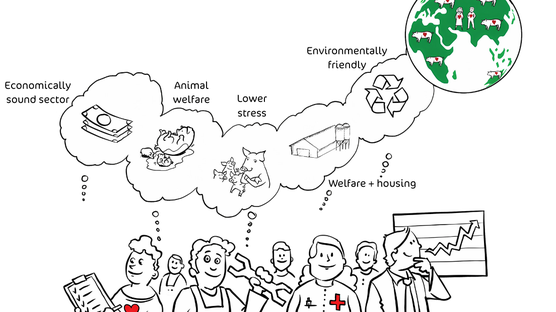
Published on Jan. 24, 2024
"An easy-to-handle sow with calm behavior and great milking skills": A Hypor Customer Success Story
We were pleased to speak to two key individuals from our customer Agropecuaria SAM: Marco Machorro, owner and Laura Apolinar, Production Manager. Agropecuaria SAM houses 8200 sows, in 3 locations in Chiapas, Mexico: a BioHypor system, and two barns where sows are sent after the first lactation . Agropecuaria SAM sends more than 5000 pigs per week to slaughter. Despite managing farm laborer shortages, like many in the industry, Laura leads a team that has achieved impressive results in litter size and number of piglets weaned.
What are the biggest challenges you currently face in the industry?
I consider the staffing to be a challenge, because in other aspects such as nutrition, genetic or preventive health support, some innovations have been made. But, when we talk about human resources, it is increasingly difficult to attract people to farms or even to the pig industry.
Does working with Hypor sows help in any way to overcome this challenge?
Yes, the Hypor sow, from our experience working with her, is an easy-to-handle sow, with calm behavior and great milking skills. During the farrowing process she is not aggressive either, and the recovery of body condition after weaning is much easier and faster.


Your farms are located in a very warm and humid place, which is not favorable to pig production. How can Hypor animals adapt to this type of environment?
Sows adapt easily to this environment. There are some differences regarding the environment in the BioHypor system in comparison to the rest of commercial farms, about 4 degrees Celsius and 20% difference in humidity, but we do not see any difference, in terms of mortality or even performance. The gilts adapt very well, including the ones we imported from Canada. In our commercial farms, it is possible to reach an average of 32-34ºC with around 90% humidity. But in fact, we have seen a reduction in sow mortality, and recently, the average is 2.6%.
You have been using the Hypor Maxter boar in your entire operation…
There is something that differentiates the Maxter from the other ones: they are uniform piglets from birth, with no extremely large piglets and we also don't see really small piglets. The litters are more uniform from the beginning, and from weaning onwards, we can begin to observe good conformation. It is a very well conformed boar with excellent performance and rusticity. The slaughter weight is 106-108kg, which perfectly suits Maxter's performance.
What are the main benefits you see in Hypor genetics? And how does this help you adapt to the challenge of limited farm laborers?
The benefits are the adaptability/rusticity and litter uniformity that help us reduce management interventions from the beginning. The sow's milking capacity also helps to reduce other types of management/actions during the lactation period. The sow's excellent recovery after weaning also helps as she accepts the feed very well. In the end, she requires less management. Technical support from the local and international technical teams haves also helped to achieve good results.




